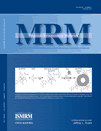Reference-based linear curve fitting for bolus arrival time estimation in 4D MRA and MR perfusion-weighted image sequences
Abstract
The bolus arrival time (BAT) based on an indicator dilution curve is an important hemodynamic parameter. As the direct estimation of this parameter is generally problematic, various parametric models have been proposed that describe typical physiological shapes of indicator dilution curves, but it remains unclear which model describes the real physiological background. This article presents a method that indirectly incorporates physiological information derived from the data available. For this, a patient-specific hemodynamic reference curve is extracted, and the corresponding reference BAT is determined. To estimate a BAT for a given signal curve, the reference curve is fitted linearly to the signal curve. The parameters of the fitting process are then used to transfer the reference BAT to the signal curve. The validation of the method proposed based on Monte Carlo simulations showed that the approach presented is capable of improving the BAT estimation precision compared with standard BAT estimation methods by up to 59% while at the same time reduces the computation time. A major benefit of the method proposed is that no assumption about the underlying distribution of indicator dilution has to be made, as it is implicitly modeled in the reference curve. Magn Reson Med, 2010. © 2010 Wiley-Liss, Inc.




